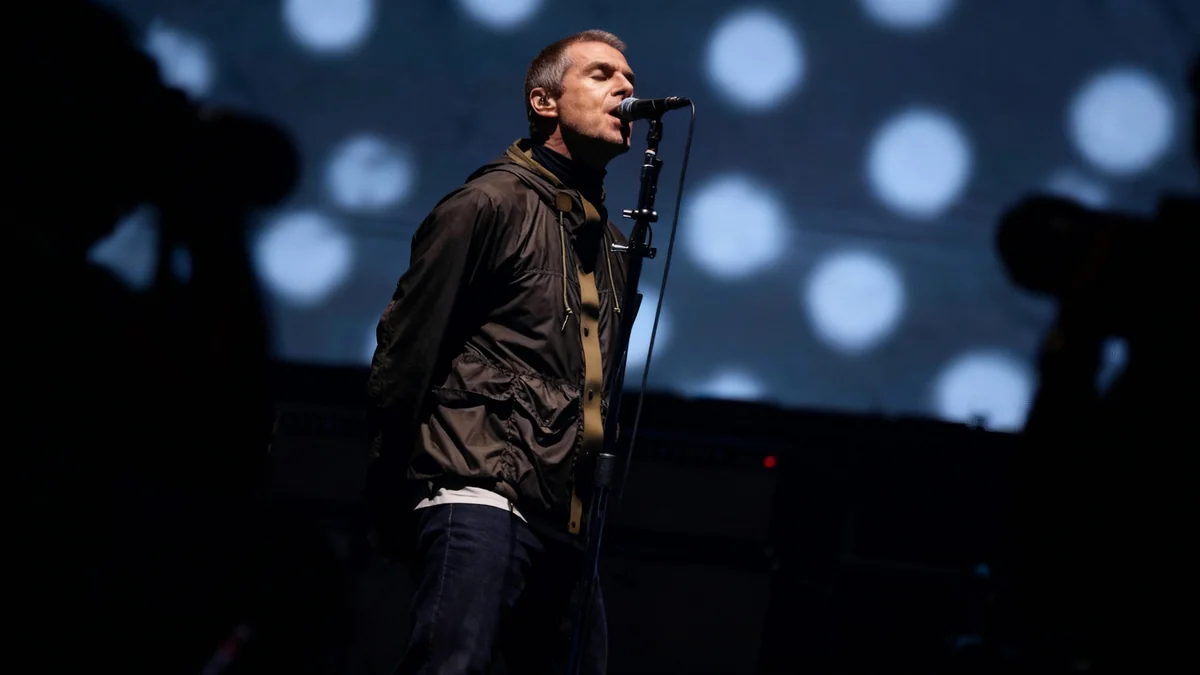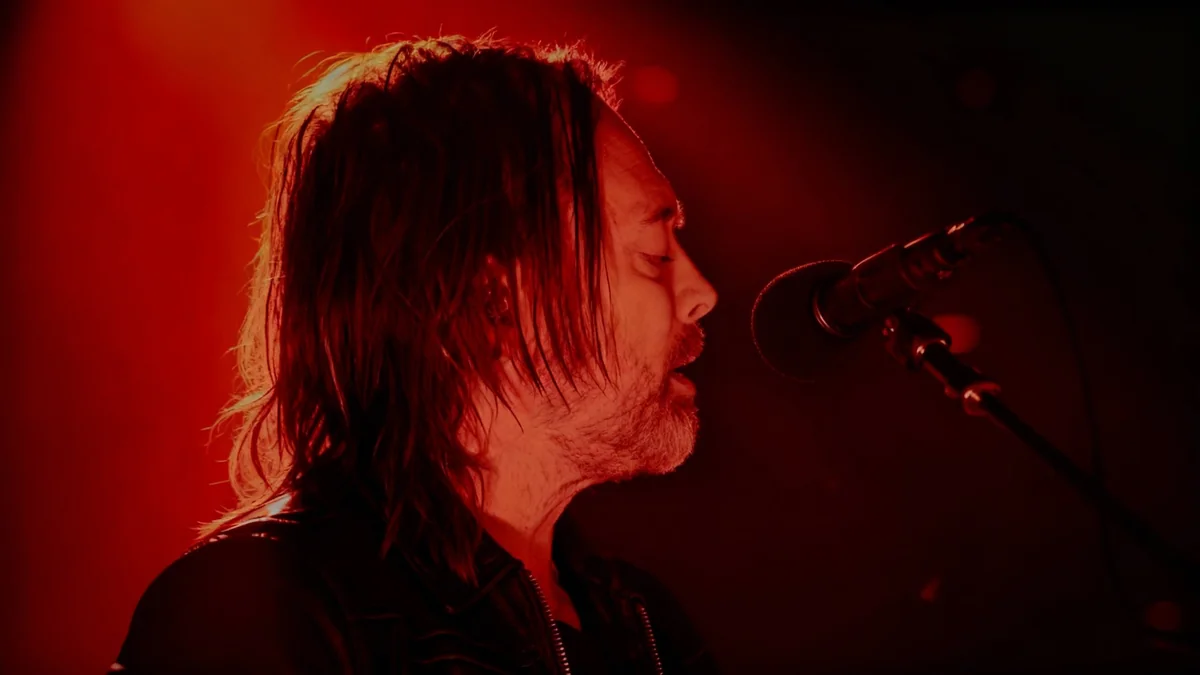Queen's iconic song, 'Bohemian Rhapsody,' is celebrating its 50th anniversary. Released in October 1975, the track has become a global phenomenon, holding the title of the most-streamed song from the 20th century. With over 2.8 billion plays on Spotify alone, its enduring appeal continues to captivate audiences worldwide. Original band members Brian May and Roger Taylor recently shared insights into the song's creation and lasting legacy.
Key Takeaways
- 'Bohemian Rhapsody' celebrates its 50th anniversary in October 2025.
- It is the most-streamed 20th-century song, with over 2.8 billion Spotify plays.
- Freddie Mercury conceived the complex, multi-part structure.
- The band spent weeks on vocal overdubs and intricate recording techniques.
- Its meaning remains largely a mystery, as Mercury preferred mystique.
- The song's innovative music video helped launch its global impact.
The Genesis of a Masterpiece
The ambition behind 'Bohemian Rhapsody' was evident from Queen's early days. Drummer Roger Taylor and lead singer Freddie Bulsara, who later became Freddie Mercury, shared a vision for success. They aimed to be the best and push musical boundaries. Taylor recalls their early conversations, often centered on their shared passion for artists like Jimi Hendrix and their desire for a unique sound.
Before Mercury joined the band, he and Taylor discussed their future. They imagined a path to musical greatness. Taylor describes their early dynamic, noting, "We wanted to be the best. We both really wanted success." This drive laid the foundation for Queen's groundbreaking work.
Fast Fact
'Bohemian Rhapsody' was first broadcast on UK radio in October 1975. It was then released as a single later that month, despite its unusual length for radio play.
Unmatched Streaming Success
Fifty years later, the song's impact is undeniable. Guitarist Brian May reflects on its timeless quality. "'Bohemian Rhapsody' doesn't get old, does it?" May states. He adds, "The music doesn't seem to get old." This sentiment is supported by its remarkable streaming numbers, which place it as a leading musical artifact of the rock era.
The track's nearly six-minute runtime (5:54) is a testament to a period when musicians could dedicate extensive time to recording. Engineers used razor blades to edit magnetic tape, and bands actively sought to expand song structures and recording technology. Taylor notes that this era required high instrumental skill, a quality he believes is less common today.
Freddie Mercury's Vision and Influence
At its core, 'Bohemian Rhapsody' embodies the genius and complexity of Freddie Mercury. He was the primary composer and driving force behind its unique structure. Mercury passed away in 1991 at age 45 due to complications from AIDS. His artistic philosophy emphasized pushing boundaries. He once said,
"In certain areas, we feel that we want to go overboard. It's what keeps us going really, darling.… We're probably the fussiest band in the world."
Taylor’s estate in the British countryside features a 20-foot-high fiberglass statue of Mercury, originally from the 'We Will Rock You' musical. Taylor believes Mercury would have found its new home amusing. The estate also houses the 60-inch gong heard in the song's final seconds, a playful nod to Led Zeppelin's use of gongs.
Early Musical Journey and Band Formation
The origins of Queen trace back to 1969. Taylor played drums with May in a band called Smile. Meanwhile, Bulsara sang in Ibex. The future bandmates shared living spaces in London, and Bulsara actively sought to join Smile. Taylor admits that Bulsara was not an exceptional singer initially. "The honest truth," Taylor says, "is he was not a great singer at the time. He had this very powerful but uncontrolled sort of noise."
Mercury was deeply inspired by Jimi Hendrix, keeping a photo of him on his mirror and attending his concerts multiple times. Hendrix represented everything Mercury aspired to be, including breaking racial barriers in rock stardom. Mercury aimed to shed his past as a shy, bucktoothed child. He rarely spoke of his privileged childhood in Zanzibar or his Parsi Zoroastrian background.
Background
Freddie Bulsara and his family moved to the UK in 1964 following a revolution in Zanzibar. He attended an elite boarding school in India from ages eight to sixteen before his family relocated.
When Smile's singer, Tim Staffell, left, Bulsara joined the band. He then renamed it Queen, a decision that initially caused discomfort for Taylor and May. Mercury insisted the name was "in the regal sense." His sexuality, which became widely known later, was less obvious in the early days. He dated Mary Austin for many years, and bandmates had only "a slight suspicion" about his true identity, according to May.
By that summer, Freddie adopted his new surname, Mercury, inspired by a lyric in Queen's debut album song, 'My Fairy King.' Taylor comments, "Freddie kind of made himself. He just forged this person, Freddie Mercury, out of seeming nowhere."
The Harmony and Influences
The distinctive vocal harmonies of 'Bohemian Rhapsody' developed in coastal caves of Cornwall, Taylor's home region. May, Mercury, and Taylor practiced three-part harmonies there even before the final lineup formed. "We used to go into the caves and just sing stuff," May recalls. "We kind of wallowed in the sound, this beautiful blend of harmonies. Particularly Freddie and I, I suppose, shared that passion."
The band's final lineup solidified with bassist John Deacon's arrival the following year. Their musical vision combined heavy, powerful backing tracks with beautiful melodies and harmonies. May noted that progressive rock bands like Yes, with their intricate riffs and harmonies, came close to Queen's aspirations.
Inspiration from Rock Legends
In December 1969, May, Mercury, and Taylor saw The Who perform their rock opera 'Tommy.' This experience further shaped Queen's direction towards bombastic and surging rock. Taylor felt the studio version of 'Tommy' was underproduced, a criticism that would never apply to Queen's work.
Did You Know?
Brian May completed his astrophysics Ph.D. in 2007, decades after pausing his studies for Queen. He even contributed data analysis to NASA's New Horizons Pluto flyby in 2015.
The band was also captivated by The Beatles' 'Because,' particularly its layered vocal harmonies. May remembers the "shivers going up my spine" upon hearing it. They saw it as a daring piece of pure harmony. Queen pushed this technique further, stacking voices in multiple layers to create a choral effect. May states, "We were able to sort of take up where the Beatles left off."
Deciphering the Lyrics
Fifty years later, the exact meaning of 'Bohemian Rhapsody' remains a subject of debate. Neither May nor Taylor can definitively explain Mercury's lyrics. Taylor says, "Sadly, we can't ask Freddie." Mercury himself was reluctant to offer explanations, believing it would diminish the song's mystique. He once stated, "People still ask me what 'Bohemian Rhapsody' is all about, and I say I don't know." His friend, DJ Kenny Everett, even claimed Mercury privately called it "rhyming nonsense."
John Reid, Queen's manager from mid-1975, believed the song was about Mercury coming to terms with his sexual identity. Reid, who was openly gay, noted Mercury's casual coming out to him. Mercury was still living with Mary Austin but began an affair with David Minns. Reid points to lines like "Gotta leave you all behind and face the truth" as evidence for this interpretation.
Personal Torment and Imagery
Minns once wrote that Mercury was "tormented by some form of guilt." These feelings seem to define 'Rhapsody,' with its repeated address to "Mama." The man shot dead in the opening lines could symbolize the end of Mercury's straight persona, even if he started writing the lyric earlier. Reid suggests, "He was saying goodbye to that life."
Taylor, however, views much of the speculation as "overinterpretation." He believes Mercury was writing an intense song and then added "amazingly daft bits in the middle." Taylor says, "I'm not sure there is one. I think what's there is plain, and the rest of it is nonsensical in a sort of Lewis Carroll way." Mercury himself reportedly loved the word "Beelzebub" for its sound rather than any demonic meaning.
"We thought, 'well, this is kind of ridiculous, so let's go.' We really enjoyed the silliness of it."
Roger Taylor
May is less certain about a singular meaning. He sees Mercury creating something beautiful using his "pain, his frustration, his confusion." May believes it was not always literal or conscious, similar to Mercury's earlier song 'My Fairy King.' He adds, "Freddie doesn't feel the need to explain himself, or be direct."
The Operatic Section and Humor
The middle section of 'Bohemian Rhapsody' depicts a battle for the hero's body and soul. However, the intensity is balanced by Mercury's playful vocals and the absurd operatic elements. Handwritten drafts show Mercury brainstorming Italianate and opera-related words like "scaramouche," "Figaro," and "Galileo" for their sound and rhyme, not deep meaning.
Mercury researched opera for the song, though he never specified details. Childhood piano lessons gave him a foundation in classical music. The original working title, "Mongolian Rhapsody," was a humorous twist on Franz Liszt's 'Hungarian Rhapsodies.'
Mercury was aware of the song's unique nature. He stated, "If you really listen to the operatic bit, there are no comparisons, which is what we want." He added that the outrageousness was inherent to the band. The song's comedic, self-aware camp is a key element. May believes this sense of humor is "healthy" and does not diminish its seriousness. Taylor agrees, saying, "We really enjoyed the silliness of it."
The Recording Process: 'A Night at the Opera'
In mid-1975, Queen began work on their fourth album, 'A Night at the Opera,' which included 'Bohemian Rhapsody.' The band had recently escaped a management deal that left them in debt despite the success of 'Killer Queen.' May recalls, "We were incredibly poor. We had nothing." Their new manager, John Reid, secured an advance from EMI Records, allowing them creative freedom.
The band started writing at Ridge Farm, outside London. May struggled with his own ambitious track, 'Prophet's Song,' while recovering from an ulcer. He heard Mercury developing 'Bohemian Rhapsody' in another room. "I could hear Freddie hammering away at 'Bohemian Rhapsody,'" May says. "It's getting more and more complex and more and more frenetic. And I'm thinking, ahhhhh."
Competitive Creativity
Queen was unique in that all members wrote hit singles. However, this also led to internal competition, which May openly acknowledges. This dynamic pushed each member to excel.
May's father, who initially disapproved of his music career, still felt he was "throwing his life away" by 1975. This added to the band's feeling that 'A Night at the Opera' was a "make or break" moment. Despite some early critical missteps, the album received positive reviews, with 'Prophet's Song' even being named the best track by some, though 'Bohemian Rhapsody' would ultimately overshadow it.
Studio Techniques and Challenges
As Mercury developed 'Bohemian Rhapsody,' May began envisioning guitar orchestrations. "The idea for all the instrumental stuff in 'Rhapsody' was growing while I was listening to him developing the song," May explains. He found playing on Mercury's songs easier due to the creative stimulation. The heavy riff after the opera section, famous from 'Wayne's World,' was Mercury's idea, though May admits it's still challenging to play.
Recording began at Rockfield Studios in Wales for basic tracks: drums, bass, and piano. Mercury's piano parts contained the melodies for the operatic sections, showcasing his skill. Taylor emphasizes Mercury's musicality beyond his showmanship. "Forget about the ridiculous outfits, the showmanship. First and foremost, he was a brilliant musician."
- The band moved between multiple London studios, contributing to the myth of 'A Night at the Opera' being the "most expensive album ever made."
- Reid disputes this, stating there was "no waste" and that other bands like The Rolling Stones likely spent more.
- Studios did not charge for overdubs, a fortunate circumstance for Queen.
- Mercury estimated they recreated a "160- to 200-piece-choir effect" by layering their voices.
- The operatic section alone took three weeks, with May, Taylor, and Mercury singing every part for thickness.
- Taylor performed the highest "Galileos," a demanding feat that led to a recorded tantrum, according to assistant engineer Gary Langan.
Length Concerns and Music Video Innovation
The song's length was a point of tension. Mercury advocated for the full six minutes, while some band members worried it was too long for a single. Taylor even recalls Deacon attempting an edit. Record label promotion men expressed concerns, but Reid insists there was no major confrontation. Elton John was a strong objector, telling Reid, "Are you fucking crazy? That will never be a hit. It's too long!"
Queen's final innovation was creating a music video, a rare move in 1975. Filmed in just four hours at Elstree Studios, it helped propel the song's global success. Taylor remembers the discomfort of the shoot, requiring him to be shirtless and covered in baby oil at 1:30 AM.
May recorded all guitar parts using his iconic Red Special, a guitar he built with his father from antique fireplace wood. He still cherishes it, calling it "a good old friend."
The Enduring Legacy of Queen
Since 2011, Queen has toured with Adam Lambert on vocals. Taylor confirms that the band is not done. "I don't think we're done," he says. "And I don't think we're gonna say, you know, final farewell tour or whatever. 'Cause it never is, is it?" While new music with Lambert has not yet materialized, May states the idea is "always in the mind."
May expresses weariness with touring but still desires to perform and innovate. He is interested in a Queen residency at the Sphere in Las Vegas, impressed by its technology. "I'm very keen on the Sphere," May says. "The stuff that we could bring to this would be stupendous." Conversations are ongoing.
John Deacon, the band's bassist, has remained private since Mercury's death. He does not speak to May or Taylor, even socially. May says, "I think both Roger and I find it quite hard, but he doesn't want to and we have to respect that." Deacon is still consulted on business decisions through management, and May confirms they have his blessing.
Mercury's presence is still felt by his bandmates. Taylor notes, "Brian and I often think he's in the room in the corner. 'Cause we know exactly what he'd say and what he'd think." May often dreams of Mercury, where his friend is simply "part of my life, as he always was." Despite Mercury's occasional dismissive comments about his music, calling it "disposable," May believes he didn't truly mean it. "Not Freddie," May concludes.




